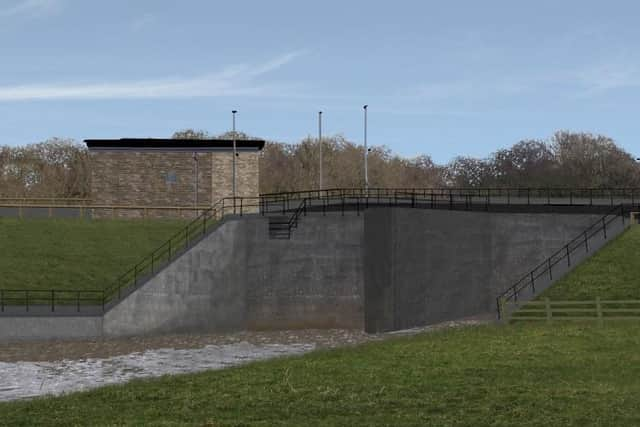£21M new Leeds flood defences to protect over 1,000 homes approved by government
and live on Freeview channel 276
Just over five years on from Storm Eva and the Boxing Day floods, HM Treasury this month approved the business case for plans which include a new flood storage area between Horsforth and Rawdon, as well as improved defences at Apperley Bridge.
The approval means the second step of the flood defences project can take place, and will enable £21m of government funding to be spent on works around the River Aire.
Advertisement
Hide AdAdvertisement
Hide AdThe proposals, drawn up jointly by Leeds and Bradford councils, have now been submitted to Leeds City Council and Bradford Council for approval. It is claimed the measures will help reduce flood risk to 1,048 homes and 474 businesses along the River Aire.


Leader of Leeds City Council Judith Blake said: “This planning application is an important step in our commitment to building our city’s resilience to climate change and providing Leeds with the level of flood defences it needs.
“If it is approved, it would mean we move closer to expanding our work on the ground which is so vital for the residents and businesses that have already experienced the devastating effects of flooding.”
According to the plans, the flood storage area will make use of an existing flood plain and will be operated by a control gate system, meaning water can be held when the river levels are high and then released back into the river when it is safe to do so.
Advertisement
Hide AdAdvertisement
Hide AdThe proposals at Apperley Bridge involve built flood defences including flood walls, embankments and a surface water pumping station.
Leeds City Council claims that, once the work is completed, the scheme will reduce flood risk to a 0.5 percent probability of occurring in any given year – more commonly known as a “one in 200 year” probability.
A decision on the planning application is expected in spring 2021, with construction hoped to start soon afterwards.
Leeds West MP Rachel Reeves said: “It is welcome that the Government has confirmed that the funding is finally on its way to allow these urgently needed flood defences to proceed.
Advertisement
Hide AdAdvertisement
Hide Ad“It has been five years of needless anxiety for people and business owners in Leeds West while they have waited for the Government to honour its promises to safeguard their homes and livelihoods.
“I hope that work will now proceed at pace so this scheme can be completed and people can be assured they are protected against a repeat of the catastrophic floods five years ago.”
So what exactly is being done?
Phase two of the Leeds Flood Alleviation Scheme is split into two steps and involves work across the River Aire catchment, including new defence walls, embankments and a flood storage area.
The work is being split into zones to simultaneously develop detailed designs in some areas and commence construction in others.
Advertisement
Hide AdAdvertisement
Hide AdStep one of Phase two, at a cost of £87m, will reduce the risk of flooding to a one percent probability of occurring in any given year (one in 100 year) and will run along an 8km stretch upstream of Leeds station including three key areas – Leeds Industrial Museum at Armley Mills, Kirkstall Abbey and Kirkstall Meadows.
Construction on this first step began in January 2020, with flood walls being installed in locations along the River Aire corridor between Wellington Bridge and Kirkstall.
Step two of the scheme increases this protection, reducing flood risk to a 0.5 percent probability of occurring in any given year (one in 200 year), including an allowance for climate change.
In full, the scheme is due to be complete in winter 2022/23 and will provide a consistent one in 200 year probability of flood protection to the River Aire between Apperley Bridge and Knostrop.